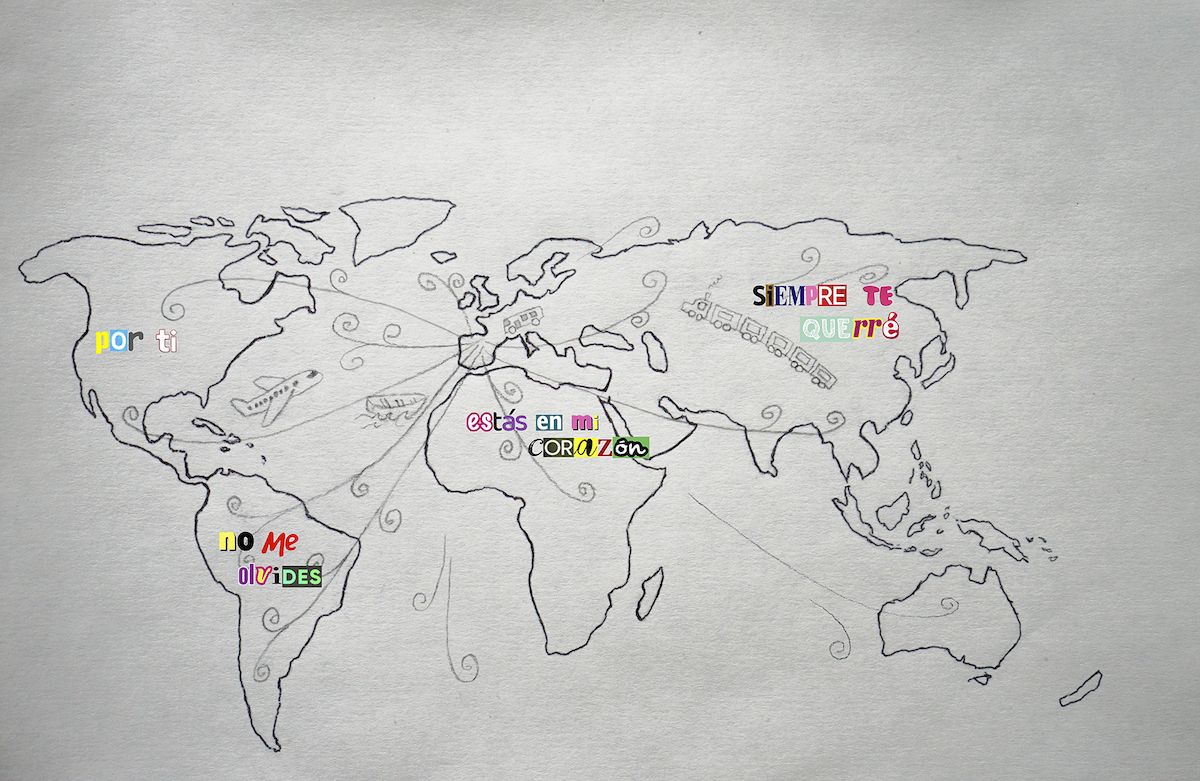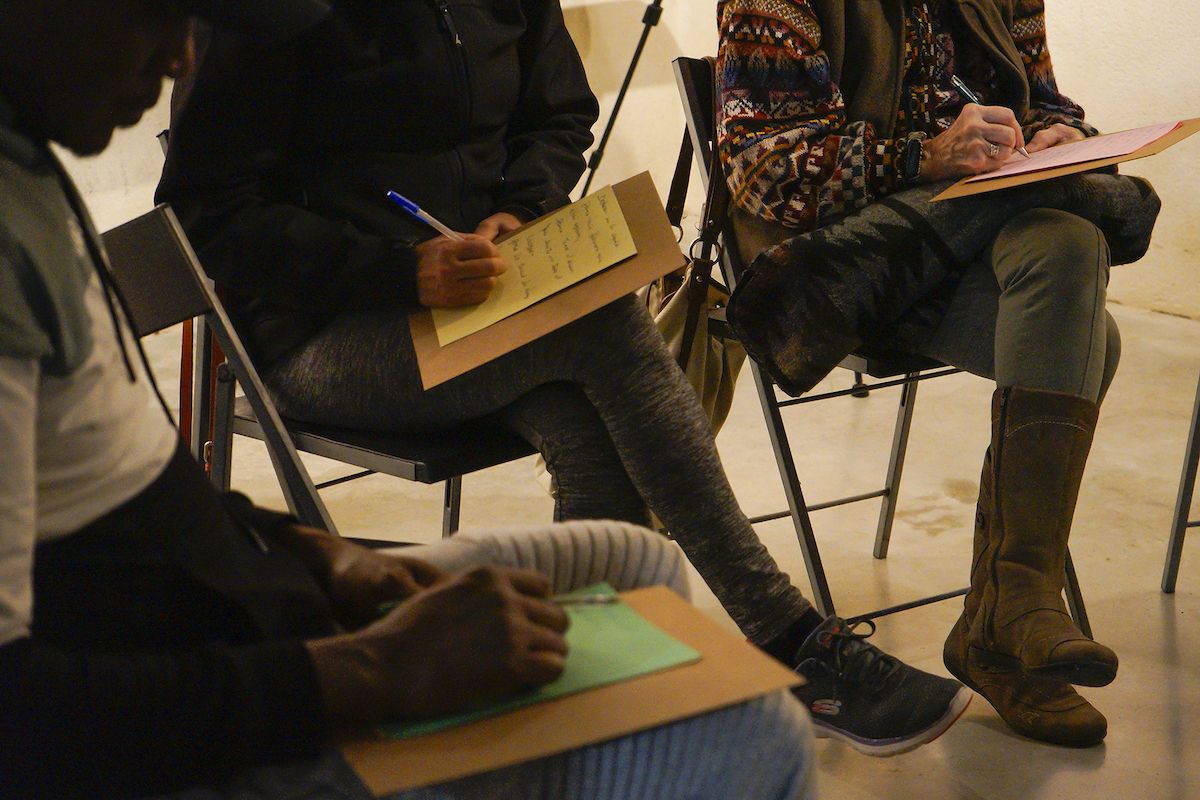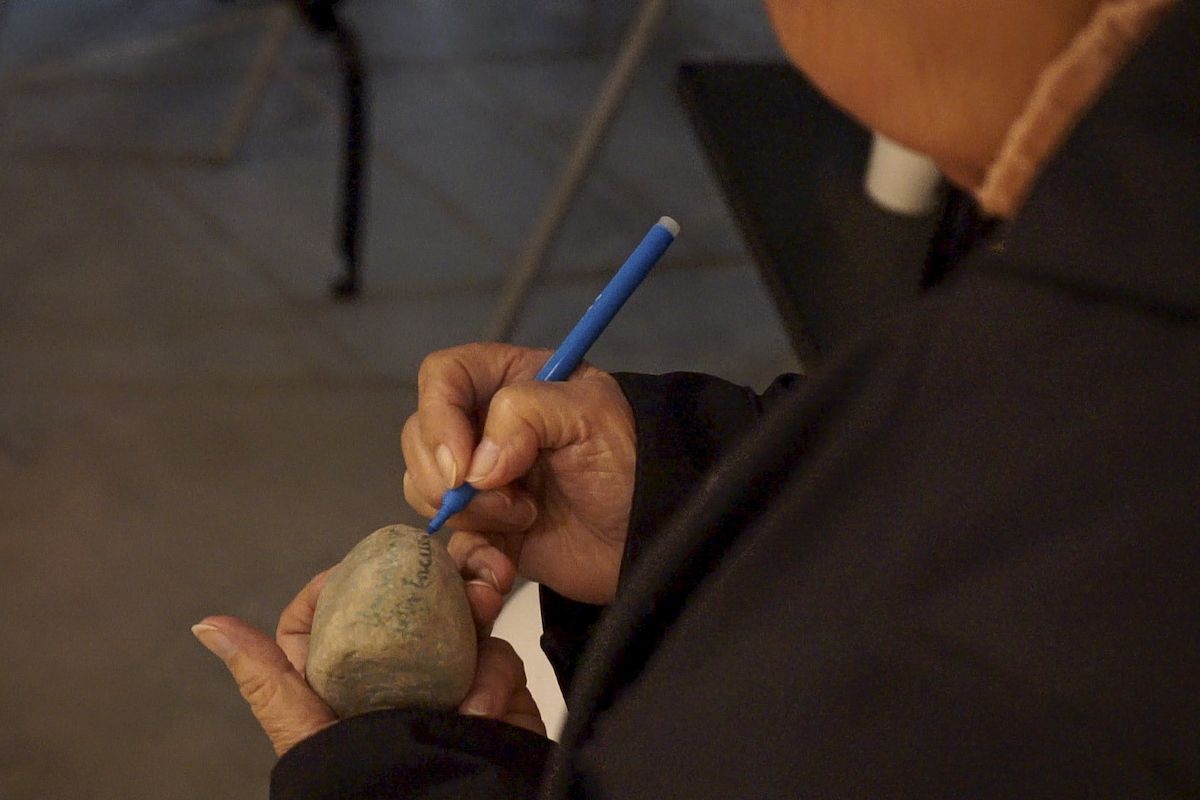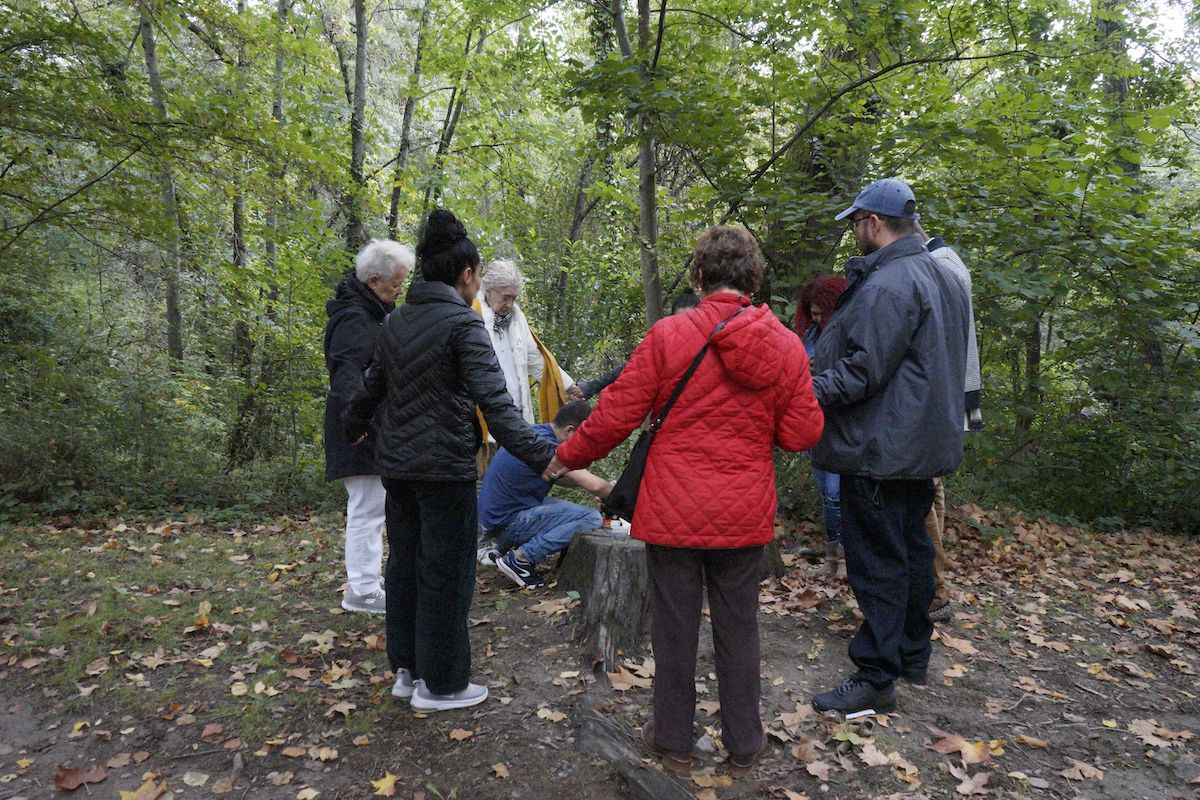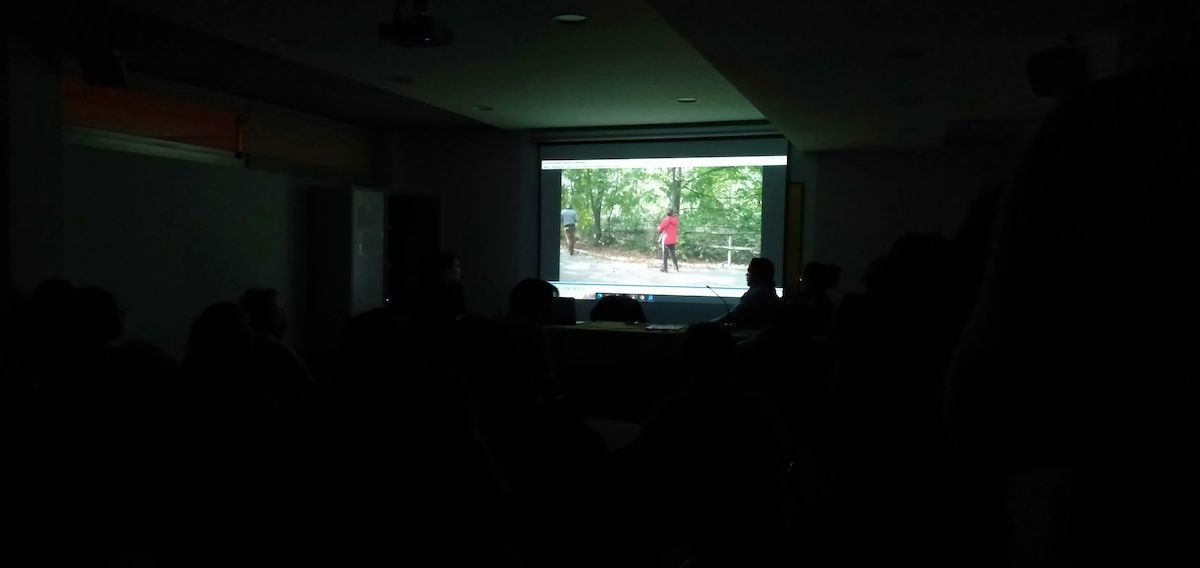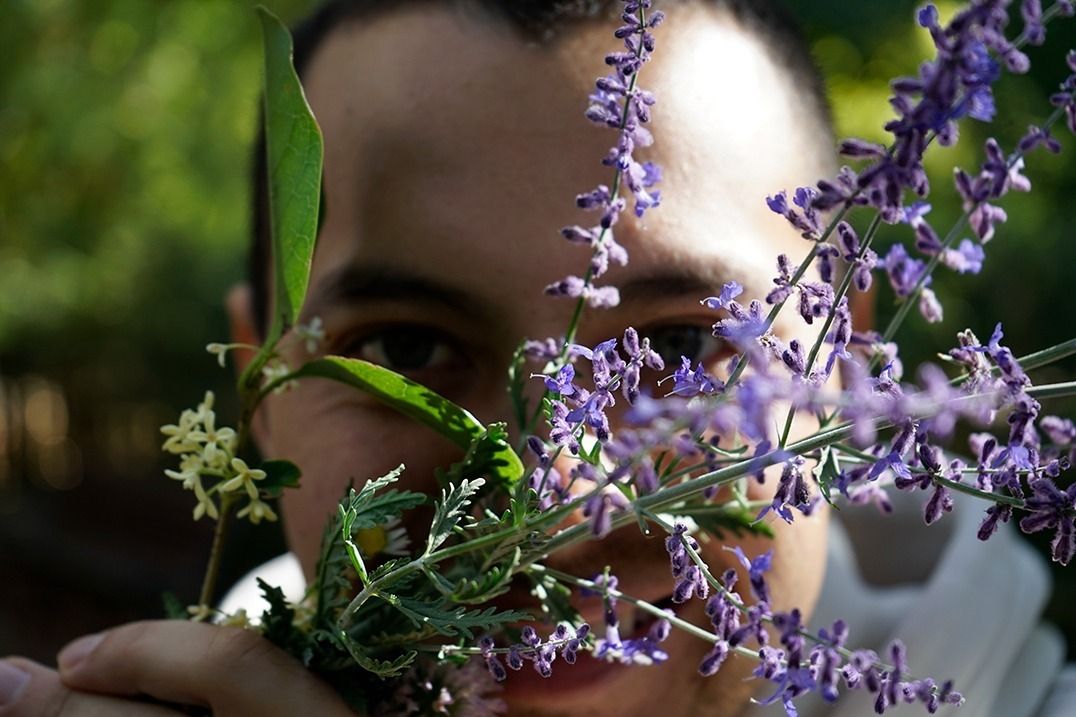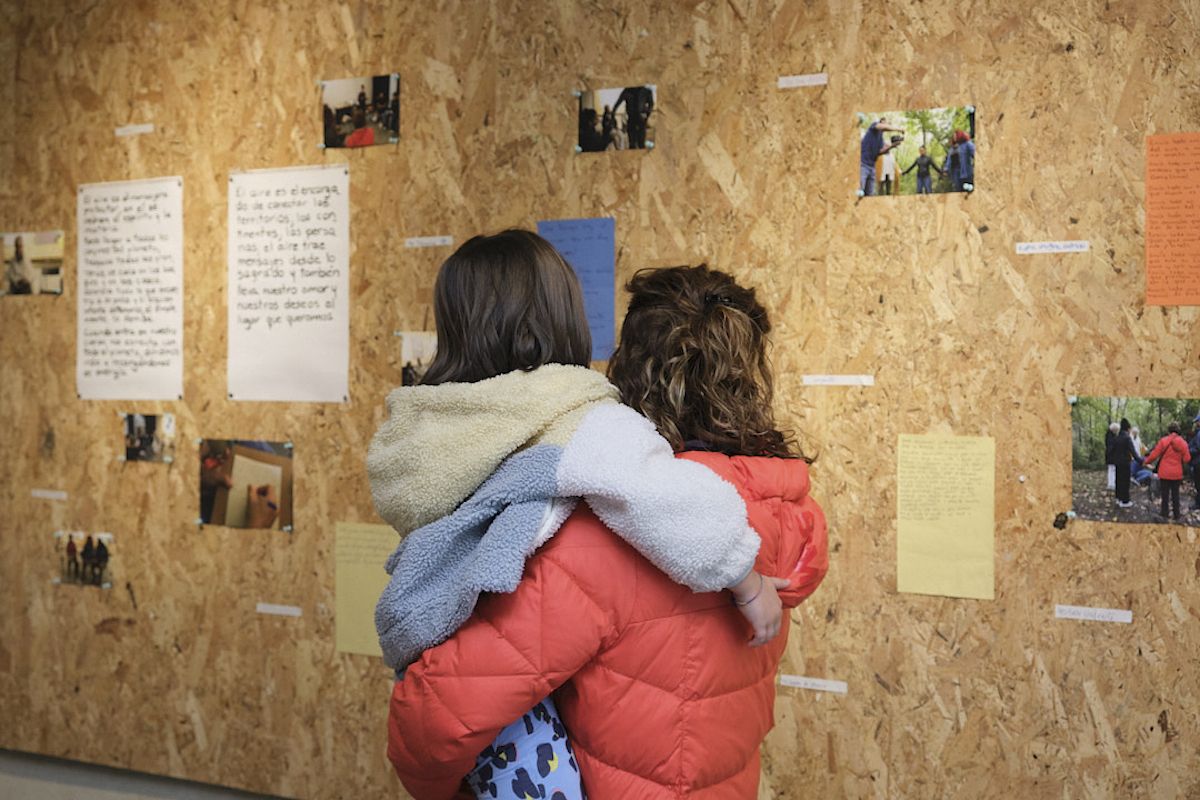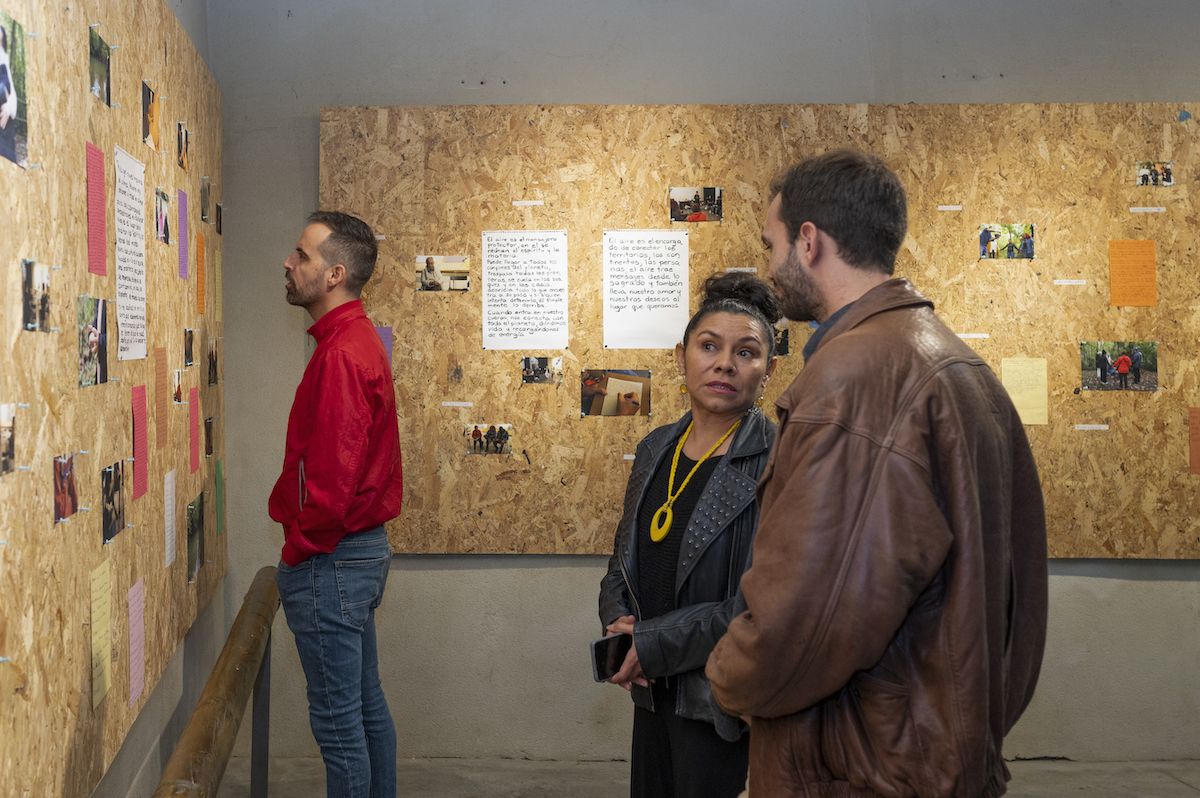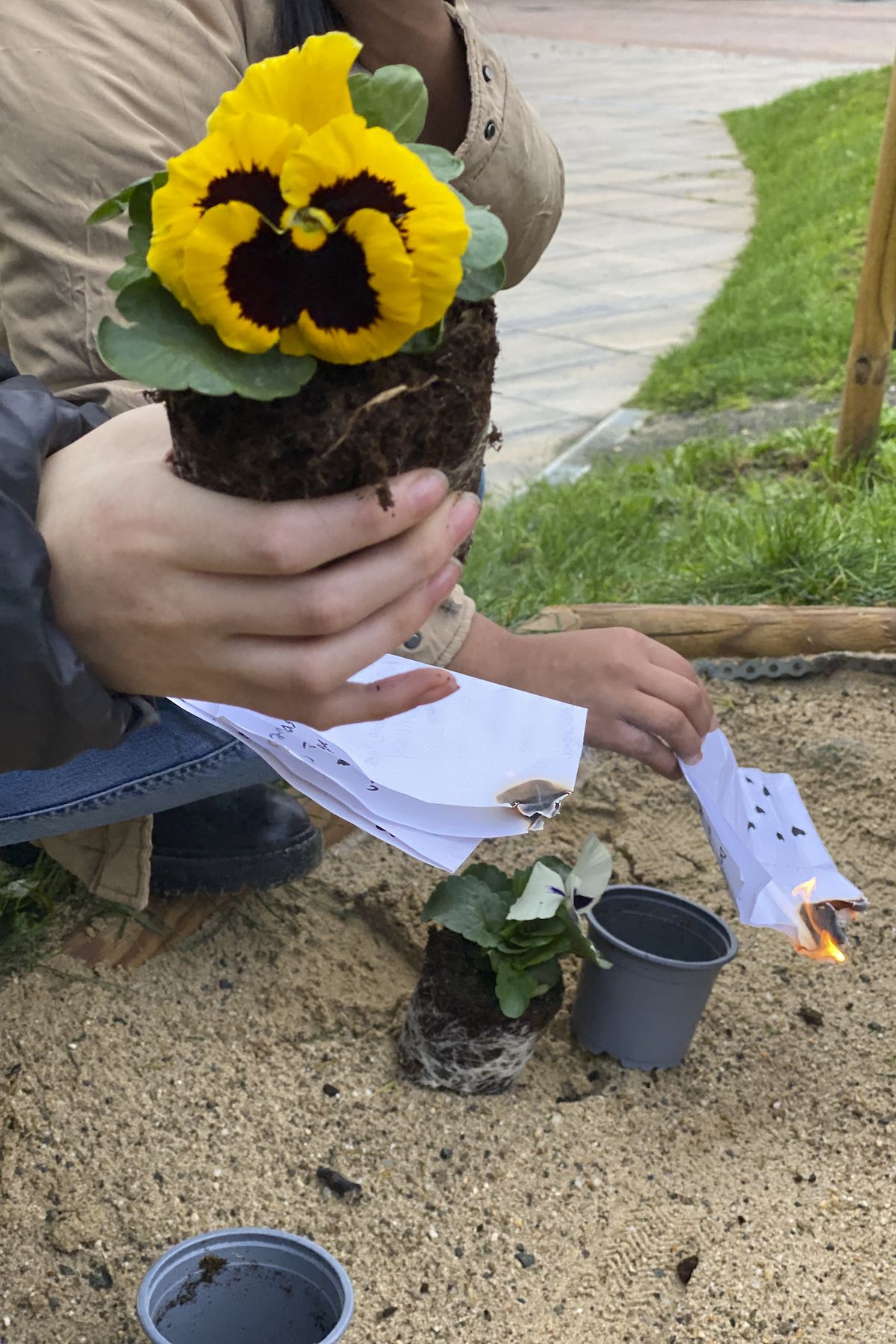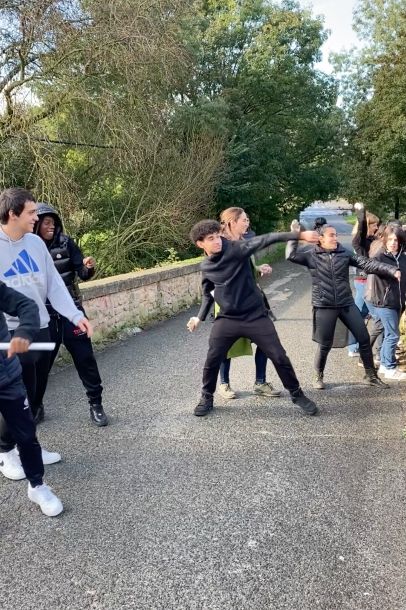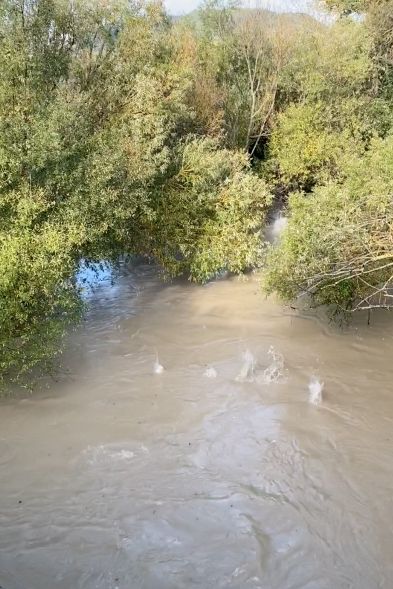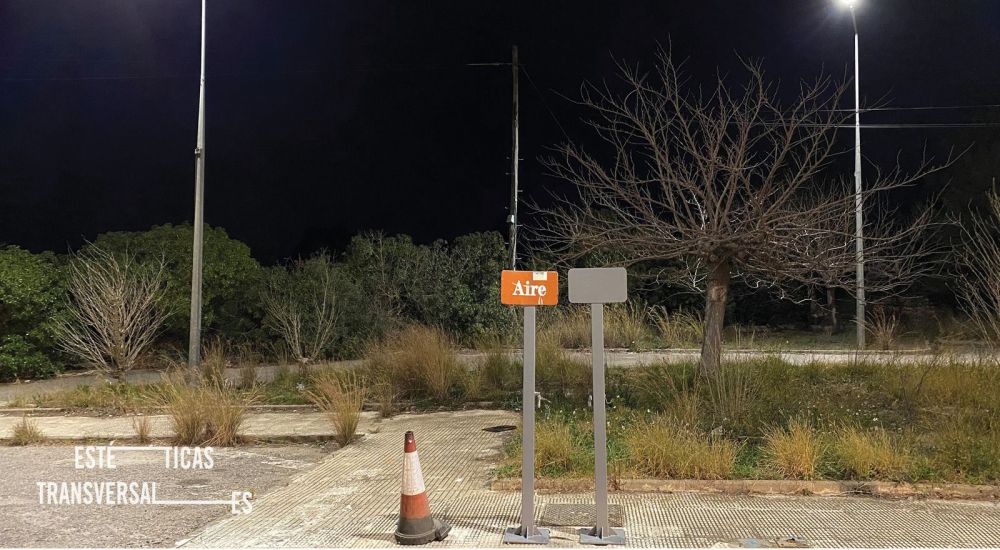
TRANSVERSAL AESTHETICS / IN THE AIR
Residencies of research and artistic production at Huarte and Barcelona
IDENSITAT + Centro Huarte /2023
IDENSITAT y CENTRO HUARTE are initiating the Transversal Aesthetics / IN THE AIR programme, developing two research and production projects within the local contexts of Huarte and Barcelona based upon the concept of the hybrid residency which will aim to work with the specific nature of these local contexts using social space activation processes. The hybrid residency will combine an on-site temporary presence along with previous and subsequent work to be carried out remotely. The two projects will be selected through a joint open call for submissions, and will be carried out between September and December 2023.
INTRODUCTION
THEMATIC FIELD OF IN THE AIR
WORKING CONTEXT
METHODOLOGY
SELECTED PROJECTS
OPEN CALL FOR SUBMISSIONS
INTRODUCTION
Transversal Aesthetics is a programme for research and experimentation on the intersection between art, mediation and social space. A place of confluence between artistic practices as a vehicle for critical research; mediation activities as a vehicle for the production of content, interaction and learning transfer; and the urban context as a vehicle for connecting specific themes of work to a specific active social space relevant to these themes. A project which takes shape in medium-sized urban spaces, as generators of social, cultural and environmental spaces at the boundaries between rural and urban. The project is founded upon the cross-disciplinary dimension of art, in order to combine experiences and activities which impact upon unique elements on the basis of common themes and strategies shared among various participating agents. There have been four previous editions of the Transversal Aesthetics programme by Idensitat and Centro Huarte, each of them focusing on a specific theme: "Peripheral Ecosystems", "Ecosystems of Leisure", "Ecosystems of Fiction", and "Immunity ~ Community". In this new edition, we will open up a process which makes a connection between the local context of the Arga river (Huarte) and that of the river Besòs (Barcelona), examining the common theme of "Air". Taking this as our starting point, we are issuing a joint open call for submissions in order to select two artistic projects which specifically address the complexity of dealing with air in contemporary thought.
THEMATIC FIELD OF IN THE AIR
This open call offers the possibility to work through artistic practices on the development of projects which take air as a focus of interest, or as a working theme. The concept of air has multiple possibilities for interpretation, wherein specific local contexts (connected to the rivers Arga and Besòs) define the project, manifesting both the condition of essentiality and power of air, and its fragility. Air as a space of distance, of mediation, of communication, as a channeler of waves, a transmitter of energy, of displacement, of relationship, of risk, of dimension, of political action, of control, of domination, of struggle, of breathing... of life.
From a physics point of view, air can be defined as the combination of different elements in a gaseous state, such as nitrogen, oxygen, argon, carbon dioxide, methane, nitrous oxide, ozone, water vapour, among others; and other micro-substances, such as dust, pollen, spores and ash, which float and mix with these gases. When other elements which harm the natural balance of the air appear, elements such as chlorine, mercury or sulphur, urban, rural or natural ecosystems are affected.
From an astrological perspective we have entered the age of Aquarius, which is an air sign. Air is mind, communication, bonding and detachment. Aquarian air energy emphasises relationships as a way of occupying a place in the world, it facilitates associations and groupings with a higher power emanating from the sum of individualities. Innovation, non-conformism or social revolution are part of this same energy.
In the artistic tradition and its contemporary practice, air has been represented in many ways, attempting to visibly manifest its immateriality, and to materialise its invisibility. Resources such as condensation, vapour, inflatable structures, aerial perspectives, sound, smell, wind, floating elements, light, mobile sculptures, the voids generated between corporeal masses, oxidation, fermentation, dérive, and many other forms of creation generated in the interactions between art and ecology, art and science, art and technology. Air is, in many cases, space.
From a policy perspective, improving air quality is one of the challenges facing the ecological transition. Reversing its deterioration through programmes that promote the transformation of production, the transformation of consumption, the design for transition, or the definition of a series of measures that allow us to imagine a cleaner future. But it is also in relation to the air that other types of politics are constructed, those of domination, control, espionage, leadership, invasion and eviction. Satellites that enable communication, balloons that scan the invisible, drones that carry bombs, transcontinental missiles, air space restrictions. In the air, as we move away from the earth's crust, borders become blurred, but it is from the air that these borders are constructed and represented.
The project Transversal Aesthetics / IN THE AIR, proposes to work from the tensions, paradoxes or connections generated by the concept AIRE/AIR, while also connecting these concept to a river, or its urban configuration, modelled along the course of the river Arga as it passes through the towns of Huarte, Villava and Burlada, or the mouth of the River Besòs as it touches upon neighbourhoods and towns in the metropolitan area of Barcelona. In each of these contexts, a specific project will be activated in an attempt to provide a creative option to the tension that this concept generates, in order to contribute to configuring a new view or perspective.
We are interested in air as the essence of life, as an impure element made up of multiple other elements and particles, as something that has been degraded at an accelerated rate by human action in the recent past, which becomes a problem to be solved in future scenarios, and which becomes an articulator of policies that are being developed in the present. We are interested in being in the air as a poetical-political form to open up the perspective, beyond the zenithal or overhead view. [+info on previous editions].
WORKING CONTEXT
The town of Huarte, where the Huarte Contemporary Art Centre is located, stands next to the towns of Burlada and Villava on the outskirts of Pamplona. The three localities follow the course of the river Arga, which has generated historical and cultural links between the three towns. In recent years, the boundaries between natural, rural and urban areas in these towns have been modified, due to urban spread and population growth, the conversion of allotment gardens into leisure spaces, and the flow and periodic overspills of the river. This geographical enclave, framed by the flow of the river in connection with its natural and urban ecosystems, defines the specific working context.
In BARCELONA the working context for this project is the area made up of neighbourhoods in the metropolitan area near the mouth of the Besòs river (Trinitat Vella, Bon Pastor, Baró de Viver, La Sagrera, Sant Andreu). These neighbourhoods are located on the edge of the city in an area characterised by multiple connections to the north of the metropolitan zone. A densely populated area which has deepened its relationship with the river since its recovery as a natural space, becoming one of the main green areas of both the neighbourhoods and the metropole (Barcelona, Santa Coloma de Gramenet, Sant Adrià de Besòs and Montcada i Reixac). In this case, the mouth of the Besós, as it touches upon the various urban enclaves, defines the working context in Barcelona.
METHODOLOGY
The work carried out as part of Transversal Aesthetics will follow three common strands: organising a temporary artistic residence, with the participation of an artist or a collective as creator and researcher within the context; setting up a local node involving various regional agents and associations; and organising a transfer of knowledge and learning related to other fields and subjects, in a suite of measures which we will denominate as Mediation Activities. These three strands may cross over, they may work in unison, or they may coexist in parallel, so that at least two of them will work together on the same project.
The local nodes may comprise a number of agents, organisations or individuals with an interest in participating in the project, or who are associated with the social, artistic or research aspects of the theme. These nodes will be formed prior to the development of the artistic project and/or mediation activities, and may vary in character, or may grow larger as time goes on. The artist or collective must propose a project involving the node, and must add their own agents to the network, who may become more or less involved, depending upon their role within the project’s framework. The project will be carried out in a triangular fashion, proposing activities or interventions in public space, open presentations and production of results.
Selected projects must investigate and explore aspects relevant to the context in order to activate working processes which address the reference points of the thematic field; from imagining other possible ecosystems, to analysing existing ecosystems in order to address certain realities, or to construct fictions that generate other possible realities. The territorial node, and activities of mediation, will involve local collectives and individuals interested in working within the proposed thematic field. The selected project will develop its work from this predefined context and theme.
SELECTED PROJECTS
pantea / AIRMAPPING
Residency in Barcelona
“Airmapping” seeks to contribute to supporting the river Besòs ecosystem through a collaborative and culturally informed approach. Inspired by elemental thinking, the air is approached as a social place that makes life possible by the organic building blocks of carbon, hydrogen, oxygen and nitrogen as well as creating space for navigating the boundaries of human and the more-than-human.
Through a series of site-specific and community-based soundwalks that combine collective artistic research, live broadcasting and cross-cultural conversations, the aim is to explore, document and re-contextualise the collective (human-nonhuman) dynamics such as the flow of chemicals, compositions, and decompositions.
Such process extends narratives in which audiovisual praxis influences new mapping approaches by inviting the more-than-human in the artistic process and communicating the knowledge relating to river Besòs ecology to a broader audience, especially with a methodological focus on including the disadvantaged including nonhumans.
BIO
Pantea is a soundmaker and multidisciplinary artist from Iran engaging with narratives of ecological and more-than-human connection. Her work has incorporated performance, walking, film, photography, and music. More recently, pantea is focused on developing a socially engaged practice by exploring possibilities brought about by sound and listening. She is passionate about the environment, plants, and wetlands. pantea is one half of the design group Studio Informal and a member of Khamoosh, an artistic research collective dedicated to preserving and archiving Iranian sonic heritage. She has works performed and exhibited internationally across the UK, Netherlands, Germany, Belgium, Croatia, Turkey, Iran and India.
Natalia López La Reina / TE ENVÍO TODO MI AMOR A TRAVÉS DEL AIRE (I SEND YOU ALL MY LOVE THROUGH THE AIR)
Residencia en Huarte
"Te envío todo mi amor a través del aire" is a reflection on the bonds of affection maintained at a distance through the air; it seeks to understand how this element is a physical vehicle of transmission, of communication, and how it is also a metaphorical vehicle of affection. It attempts to frame a sensitive vindication and reparation of what is implied by separation due to migration.
This project, in collaboration with immigrants living in Huarte, Burlada and Villava, aims to create artworks and spaces which speak of the importance of their affections, of the landscapes, cultures, and of the people they have left behind. These artworks and spaces will arise from a series of ritual actions in which the river Arga will be used as a symbolic healing being, recognising the paths in life, and letting go of sadness; and the air will be used as a vehicle -also symbolic- for bringing closer loved ones who are far. The artworks, spaces and actions will be based on research into the river and the air as elements of power in ancestral cultures, as metaphorical and poetic vehicles of love, and as physical/chemical elements of transmission.
BIO
Natalia López La Reina is a visual artist from the Universidad Nacional de Colombia. She studied art criticism and audiovisual criticism at the Universidad de La Habana, Cuba, between 2019 and 2020. Her work is mainly developed through video, photography, installation, performance, and drawing. She began her career within the nadieøpina collective, alongside renowned artists who gave her the basis for what her work is today. She has been selected for several artistic residencies, among them Radicantes Amazonas by Fundación Vajelogía, Arte Como Educación by Luis Camnitzer, and Arte en Antártida Para Artistas Extranjeros by the Argentinean government; from this experience she founded the Proyecto Colombiano de Arte en Antártida of which she has been the director since 2017. Her projects have been exhibited in renowned galleries and art foundations in Bogotá and Medellín in Colombia, and in countries such as Argentina, Ecuador, Cuba, Peru, Chile, Germany and the United States.
GO TO PREVIOUS EDITIONS OF TRANSVERSAL AESTHETICS

